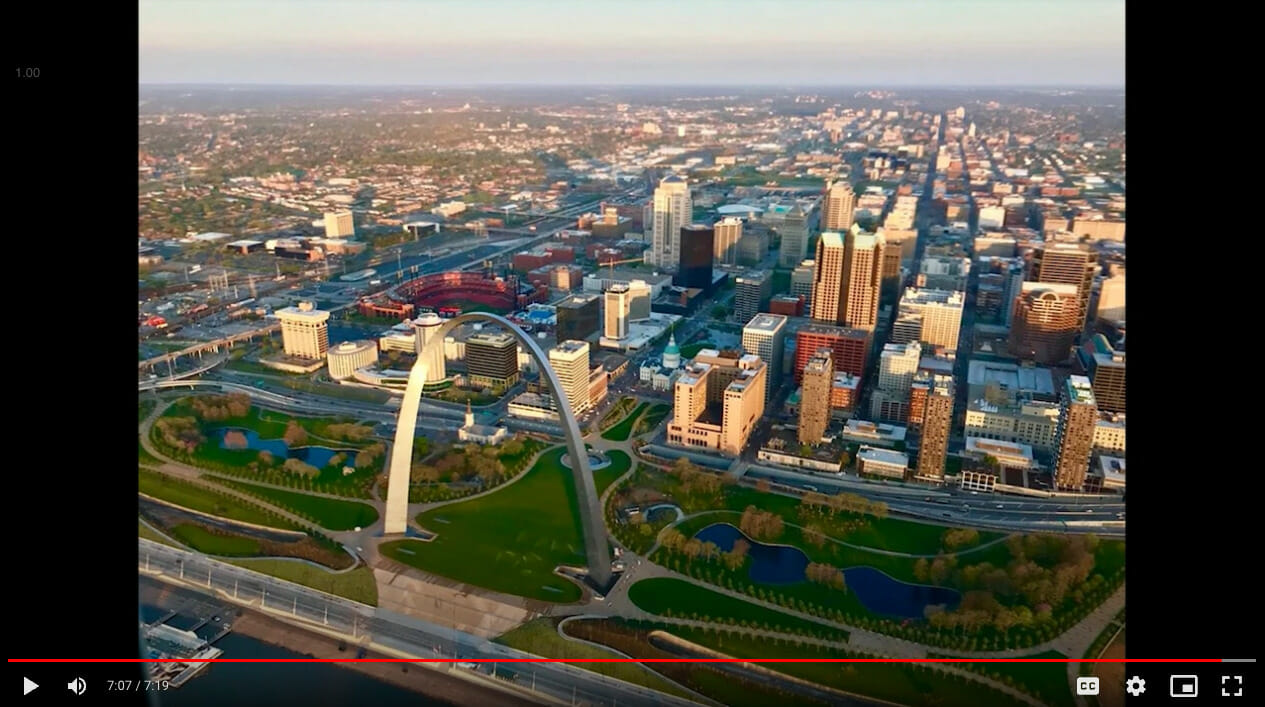Throughout this semester, History of St. Louis students have been studying a variety of components that allow them to dig deep into urban studies, which includes economics, population, transportation, environment, housing and built environment, education, health, security/policing/military, culture, and governance. One of their assignments was to write research papers that explore one element as it pertains to St. Louis. Then, each student was tasked with finding someone to share a personal story that humanizes the topic.
“We wanted them to find the human side of these issues,” said Carla Federman, JK-12 History and Social Sciences Department Chair. “Find someone who had some sort of lived experience as related to the topic and then tell that person’s story.” The goal was for students to make a personal connection and see how urban issues not only impact everyday people but can be impacted by everyday people.
Students interviewed their subjects and then created video profiles that tell the story of their interviewee while putting it in the greater context of urban studies in St. Louis. The project is reminiscent of the work of an early speaker for the class: Lindy Drew from Humans of St. Louis uses storytelling to connect people and amplify the voices of those whose stories are not often told. It’s a way for us all to empathize with people we don’t know. Drew encouraged students to think about the power of storytelling, and this project allowed them to put this thought into action.
Each student produced a four-to-six-minute video that included footage of an interview with someone who is not a family member, MICDS employee, or student. They also had to provide voice-over narration that provided historical background, bridged the various segments, and related their interviewee’s story to their broader topic to provide context and, hopefully, build empathy and connection for viewers. Students were also encouraged to find historical images or footage and to film their own.
“The project was very effective at putting a face and a voice to a St. Louis issue because, instead of just learning about a topic in the classroom, we were able to learn about personal experiences of people outside of school that relate to different topics,” said Zoe Zlatic ’24. “The topic of my project was culture, so I decided to interview a friend of my mom’s. She is a Russian immigrant and had so many stories to tell. I had trouble cutting clips down for the final video because everything was so interesting!”
The videos were accompanied by a private social media account limited to students and teachers in the course. Each storyteller posted one photo and a quote from their project, forcing them to distill their larger work down into the single story they wanted to share with their classmates. “The entire project involves interviewing, storytelling, historical context, and the agency of individuals,” said Federman.
David Ding ’24 said, “Before doing this project, I couldn’t imagine St. Louis used to be such a thriving city and still has so much potential. Even though St. Louis has seemed to be on its downfall in recent decades, some industries, such as life science, are doing surprisingly well. But of course, there will still be much to improve in the future. This project effectively broadened my knowledge and views on the issues and advantages in terms of economic development because of doing broad research and diving deep into specific areas to talk to my interviewee.”
“I enjoyed the opportunity to connect with a figure in my community that I wouldn’t necessarily interact with,” said Camden Miller ’24. “My interview with Chief Hayden was very insightful, especially as most of my prior research into the topic of policing in our area has come from outside sources. Getting the police perspective on the issues that are commonly highlighted in our communities was a particularly eye-opening experience.”
Check out Miller’s interview with Chief Hayden:
“I thought this project was really interesting because it was everything we had researched in our essays and learned from class but applied in a real world setting,” said Madison Sineff ’24. “My topic was the impacts of highway implementation on urban neighborhoods, so I focused on Lafayette Square and the effects of interstate 44. I was able to interview several residents in the square who were a part of their Lafayette neighborhood association and, especially being someone that lives in the county, I felt I was able to get a better grasp on how these modern issues are relevant and affecting the lives of actual people rather than just reading articles or seeing data about them. The interviews were a creative and definitely effective approach because we not only got experience with organizing them independently, but also gained a personal outside input that just can’t be taught in the classroom.”
The goal of the History of St. Louis course, in alignment with the School’s mission, is to help students understand the larger community and the communities in which they live to become more active and engaged citizens. This video project, coming near the end of the class, was a great way for students to dive deeply into a story that makes the topic personal and relevant while sharpening their communication skills.
Sineff continued, “Overall, I enjoyed the project and being able to put together these personal pieces with previous research to create a unique end product, which definitely deepened my understanding of how some of the modern issues and perspectives are shaping St. Louis.”
